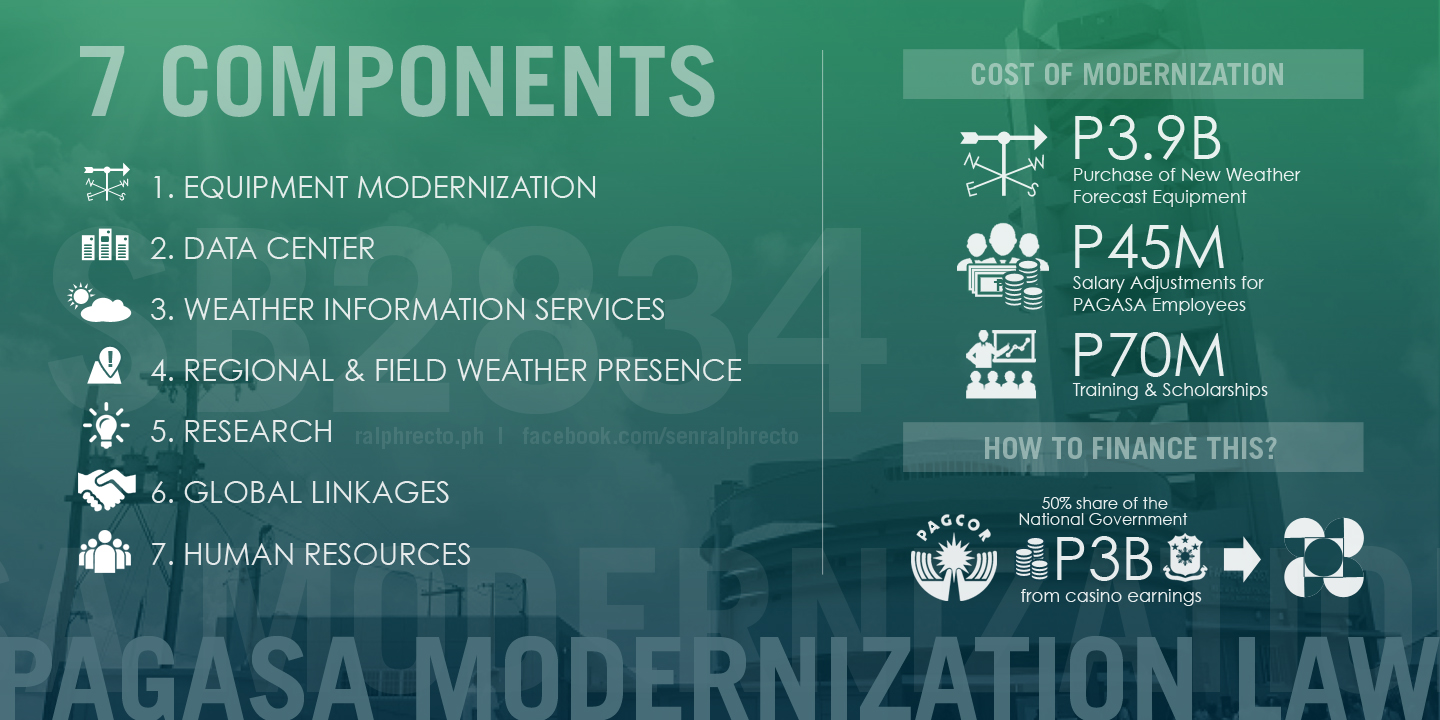PAGASA Modernization Bill Palace-bound as House OKs Senate version
The House of Representatives approved yesterday the Senate-version of the PAGASA Modernization Bill, foreclosing any need to convene a Bicameral Conference Committee, and sending the bill to President Aquino’s desk, Senate President Pro-Tempore Ralph G. Recto said today.
Recto thanked “the Bigger and Better House” for adopting Senate Bill 2834, which Recto authored.
The Senate approved on third and final reading SB 2834 last week.
Recto said a modernized weather bureau is the “missing link” in the country’s climate adaptation efforts.
“There can be no climate change adaptation without weather bureau modernization,” Recto stressed.
“A well-equipped weather bureau, manned by highly-competent and well-compensated professionals, is a must in the second-most disaster-prone country in the world,” he said.
A strong El Nino next year threatens the Philippines while a parade of cyclones from 2004 to 2014 left 14,150 dead, 46,691 injured, 4,169 missing; damaged 4.5 million houses and destroyed P338 billion worth of properties.
Recto explained that the proposed PAGASA Modernization Law will have seven modernization components: equipment and operational techniques, data center, information services, human resources, regional and field weather presence, research and global linkages.
The cost of urgently-needed equipment and buildings is P3.9 billion, based on a “preliminary shopping list” PAGASA has submitted to the Senate.
To finance this, as well as the agency’s future needs, the Senate bill taps both budgetary and “off-budget” sources, Recto said.
Included in the latter is a proposed P3 billion from the gross income of PAGCOR, to be taken from the 50% share of the national government.
According to Recto, the bill also addresses “personnel welfare issues”.
Some P45 million annually is needed to fund compensation adjustments, plus P70 million for training and scholarships.
The bill prescribes “a personnel retention scheme” in order to prevent what Recto described as “the phenomenon of more and more PAGASA personnel leaving the Philippine Area of Responsibility or PAR yearly.”
Recto said investments in PAGASA dwarf the “damages caused by typhoons in this climate change era when they’re coming in at unexpected places, unexpected strengths, and unexpected times.”
“’Yang P3.9 billion, halimbawa, ay maliit kumpara sa P116 billion in combined damages to property and infrastructure ng apat na bagyo pa lang, ang Ondoy at Pepeng noong 2009, Yolanda noong 2013 at Glenda noong isang taon,” Recto said.
Recto said the “vision is for PAGASA to go local” and this would need deploying weather equipment in as many areas in the country as possible.
“We want a weather bureau to tell us when and where it would rain, so that the man behind the carabao in Mindoro will know when to plow the field and the man behind the wheel in Malabon will know when to plod through flooded streets,” Recto said.
“Weather forecasts are like traffic apps. Lalung lalo na sa Metro Manila, where the economic cost of vehicular traffic is already P2.4 billion on an uneventful day and possibly twice that amount on bad weather nights,” Recto said.
At present, a string of 10 Doppler radars provide service from Aparri, Cagayan to Hinatuan, Surigao del Sur. Five more are being built.
View Sponsorship Speech (10 JUN 2015)
Watch Sponsorship Speech and Presentation
Download PDF (SBN-2834)


